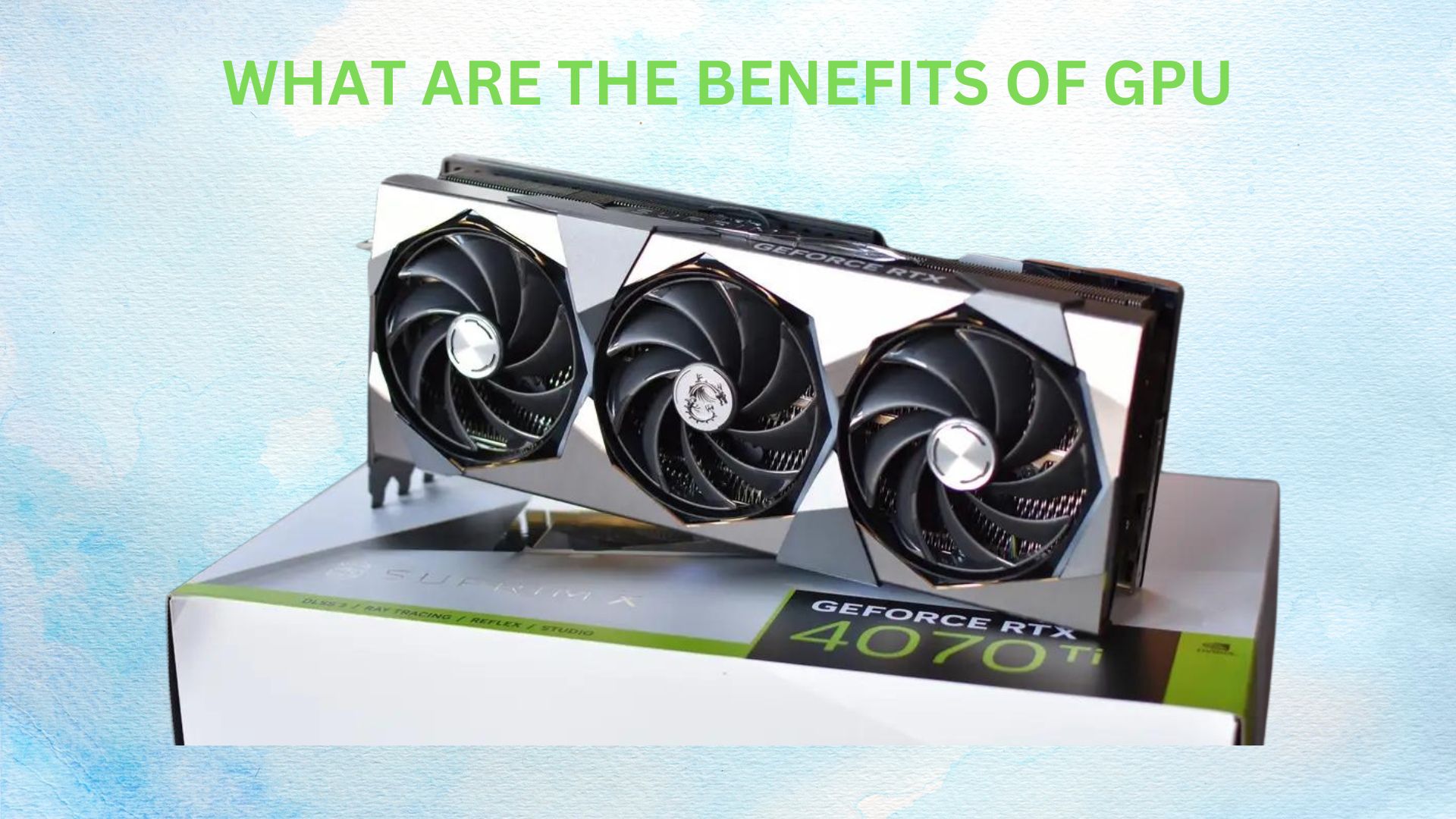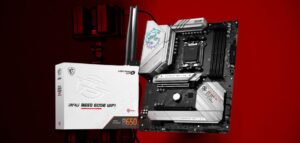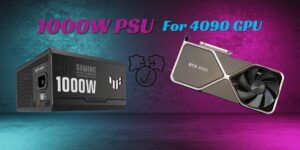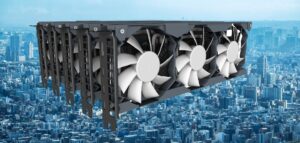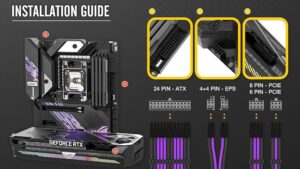What Are The Benefits of GPU? Unlocking the Power
Graphics Processing Units (GPUs) offer a myriad of benefits across diverse computing domains. Renowned initially for rendering high-quality graphics in gaming and multimedia applications, GPUs have evolved into versatile processors with unparalleled parallel processing capabilities. Beyond enhancing visual experiences, GPUs accelerate scientific simulations, power artificial intelligence algorithms, and enable real-time ray tracing. Their efficiency, performance, and scalability make GPUs indispensable for tasks ranging from data analytics and machine learning to creative design and high-performance computing. In this introduction, we explore what are the benefits of GPU across various industries and applications.
1. Parallel Processing Power:
At the heart of GPU’s prowess lies its unparalleled ability to perform parallel processing tasks efficiently. Unlike traditional Central Processing Units (CPUs), which excel at sequential processing, GPUs are optimized for handling numerous tasks simultaneously. This makes them exceptionally suited for tasks requiring massive computational power, such as video rendering, scientific simulations, and machine learning algorithms.
2. Enhanced Graphics Rendering:
One of the primary functions of GPUs is to render high-quality graphics for visual applications. Whether it’s rendering lifelike environments in video games or producing intricate visual effects in movies, GPUs excel in delivering immersive graphical experiences. By offloading graphic-intensive tasks from the CPU, GPUs ensure smoother frame rates and superior image quality, enhancing user experience across various platforms.
3. Accelerated Data Processing:
In addition to graphical tasks, GPUs are increasingly utilized for accelerating general-purpose computing tasks, a concept known as General-Purpose GPU (GPGPU) computing. By leveraging the parallel processing capabilities of GPUs, tasks involving complex mathematical calculations, data analytics, and scientific simulations can be executed significantly faster compared to conventional CPU-based approaches. This acceleration enables researchers, engineers, and data scientists to tackle computationally intensive problems more efficiently, leading to faster insights and breakthrough discoveries.
4. Machine Learning and Artificial Intelligence:
The proliferation of machine learning and artificial intelligence applications has fueled the demand for high-performance computing solutions. GPUs have emerged as the backbone of modern AI systems, thanks to their ability to train and deploy deep learning models with unprecedented speed and efficiency. Neural network training, a computationally intensive process involving millions of matrix operations, can be dramatically accelerated using GPU clusters, enabling researchers to iterate on models faster and tackle more complex problems.
5. Real-time Ray Tracing:
The advent of real-time ray tracing represents a significant milestone in computer graphics, enabling more realistic and immersive visual experiences. Traditionally, ray tracing, a rendering technique for simulating the way light interacts with objects in a scene, was computationally demanding and feasible only for offline rendering. However, with the advent of hardware-accelerated ray tracing support in modern GPUs, real-time ray tracing has become a reality, revolutionizing the gaming and entertainment industries and opening up new possibilities for interactive storytelling and virtual environments.
6. High-Performance Computing (HPC):
In the realm of high-performance computing (HPC), where computational power is paramount, GPUs have become indispensable tools for accelerating scientific simulations and numerical computations. Whether simulating complex physical phenomena, modelling climate patterns, or optimizing financial algorithms, GPUs offer unmatched performance and scalability, enabling researchers to push the boundaries of scientific exploration and innovation.
7. Energy Efficiency:
Despite their immense computational power, GPUs are remarkably energy-efficient compared to CPUs when performing parallelizable tasks. This efficiency stems from the architecture of GPUs, which prioritize throughput and parallelism while minimizing energy consumption per operation. As energy efficiency becomes increasingly critical in data centres and mobile devices, GPUs offer a compelling solution for achieving high performance while minimizing power consumption and operational costs.
8. Cryptocurrency Mining:
The rise of cryptocurrencies has led to a surge in demand for computational power for mining and validating transactions. GPUs, particularly those designed for gaming and high-performance computing, are well-suited for cryptocurrency mining due to their parallel processing capabilities. Graphics cards equipped with powerful GPUs can perform the complex mathematical calculations required for mining various cryptocurrencies, providing miners with an efficient and cost-effective means of participating in blockchain networks.
9. Creative Expression and Design:
Beyond their utility in technical and scientific domains, GPUs empower artists, designers, and creative professionals to unleash their imagination and bring their visions to life. Whether creating stunning visual effects, intricate 3D models, or immersive virtual worlds, GPUs provide the computational horsepower needed to realize ambitious creative projects. From digital sculpting and animation to architectural visualization and virtual reality experiences, GPUs serve as indispensable tools for pushing the boundaries of artistic expression and design.
Factors to Consider For a Quality GPU:
Selecting a quality Graphics Processing Unit (GPU) is essential for achieving optimal performance in various computing tasks, including gaming, content creation, scientific simulations, and machine learning. Several factors must be considered to ensure that the chosen GPU meets your specific requirements and delivers the desired performance. Below are the key factors to consider when evaluating the quality and benefits of a GPU:
1. Performance:
- GPU performance is typically measured by its processing power, expressed in terms of clock speed, number of cores, and memory bandwidth.
- Higher clock speeds and more cores generally result in better performance, allowing the GPU to handle complex calculations and graphical tasks more efficiently.
- Look for benchmarks and reviews to compare the performance of different GPUs in real-world scenarios, such as gaming frame rates, rendering times, and computational tasks.
2. Memory:
- GPU memory, also known as VRAM (Video Random Access Memory), plays a crucial role in storing and accessing data used in graphics rendering and computational tasks.
- Higher VRAM capacity allows the GPU to handle larger textures, higher resolutions, and more complex scenes without experiencing performance degradation.
- Consider the type (e.g., GDDR6, HBM) and speed of VRAM, as well as the memory bus width, which affects memory bandwidth and overall performance.
3. Compatibility:
- Ensure that the GPU is compatible with your system’s motherboard, power supply, and other components.
- Check the physical dimensions of the GPU to ensure it fits within your PC case, especially if you have space constraints.
- Verify the interface compatibility (e.g., PCIe x16) and available connections (e.g., DisplayPort, HDMI) for connecting monitors and other peripherals.
4. Cooling and Thermal Management:
- Efficient cooling is essential for maintaining optimal GPU performance and longevity.
- Look for GPUs equipped with high-quality cooling solutions, such as large heatsinks, heat pipes, and fans, to dissipate heat effectively.
- Consider aftermarket cooling solutions or custom-cooled models for improved thermal performance and quieter operation, especially during heavy workloads.
5. Power Consumption and Efficiency:
- Assess the power requirements of the GPU and ensure that your power supply unit (PSU) can provide sufficient power.
- Choose a GPU with low power consumption and high efficiency to minimize energy costs and reduce heat output.
- Look for GPUs built using energy-efficient architectures and advanced manufacturing processes, such as NVIDIA’s Turing architecture or AMD’s RDNA architecture.
6. Software Support and Driver Stability:
- Evaluate the availability and quality of drivers and software updates provided by the GPU manufacturer.
- Opt for GPUs from reputable manufacturers with a track record of delivering timely driver updates and addressing software issues.
- Consider compatibility with your operating system and preferred software applications, especially if you use specialized software for gaming, content creation, or professional workloads.
7. Price-to-Performance Ratio:
- Consider the price-to-performance ratio when comparing different GPU options.
- Evaluate the performance benefits relative to the price of the GPU to determine its overall value proposition.
- Take into account your budget constraints and prioritize features and performance metrics that align with your specific needs and usage scenarios.
8. Brand Reputation and Support:
- Choose GPUs from well-established brands known for their reliability, quality, and customer support.
- Research user reviews, ratings, and feedback to gauge the reputation of the GPU manufacturer and assess customer satisfaction.
- Consider warranty coverage, return policies, and technical support services offered by the manufacturer or retailer.
Conclusion:
In answer to the question what are the benefits of GPU, have evolved from specialized graphics processors to versatile computational engines that drive innovation across a myriad of industries. With their unparalleled parallel processing power, GPUs accelerate a wide range of tasks, from graphics rendering and scientific simulations to machine learning and artificial intelligence. As technology continues to advance, the transformative benefits of GPU will continue to shape the future of computing, enabling new possibilities and unlocking untapped potential in fields ranging from entertainment and gaming to scientific research and beyond.
FAQs: What Are The Benefits of GPU?
Q: What is a GPU?
Ans: A GPU, or Graphics Processing Unit, is a specialized processor designed to accelerate graphics rendering and perform parallel computing tasks.
Q: How does a GPU differ from a CPU?
Ans: A GPU is optimized for parallel processing, handling multiple tasks simultaneously, while a CPU excels at sequential processing and general-purpose computing.
Q: What are the primary applications of GPUs?
Ans: GPUs are used for gaming, video rendering, scientific simulations, artificial intelligence, machine learning, and high-performance computing tasks.
Q: What factors influence GPU performance?
Ans: GPU performance is influenced by factors such as clock speed, number of cores, memory bandwidth, VRAM capacity, and software optimization.
Q: Are all GPUs compatible with my system?
Ans: Compatibility depends on factors such as interface (e.g., PCIe), physical dimensions, power requirements, and driver support, so check compatibility before purchasing.
Last Updated on 26 January 2025 by Ansa Imran

Ansa Imran, a writer, excels in creating insightful content about technology and gaming. Her articles, known for their clarity and depth, help demystify complex tech topics for a broad audience. Ansa’s work showcases her passion for the latest tech trends and her ability to engage readers with informative, well-researched pieces.

